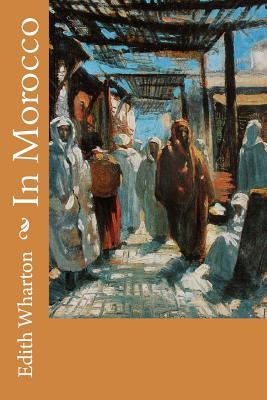
- Išsiųsime per 10–14 d.d.
- Autorius: Edith Wharton
- Leidėjas: CreateSpace Independent Publishing Platform
- Metai: 2016
- Puslapiai: 132
- ISBN-10: 1530321387
- ISBN-13: 9781530321384
- Formatas: 15.2 x 22.9 x 0.7 cm, minkšti viršeliai
- Kalba: Anglų
- Extra -15 % nuolaida šiai knygai su kodu: ENG15
Atsiliepimai
Aprašymas
In Morocco is a classic Moroccan travelogue by Edith Wharton. The conditions in which I travelled, though full of unexpected and picturesque opportunities, were not suited to leisurely study of the places visited. The time was limited by the approach of the rainy season, which puts an end to motoring over the treacherous trails of the Spanish zone. In 1918, owing to the watchfulness of German submarines in the Straits and along the northwest coast of Africa, the trip by sea from Marseilles to Casablanca, ordinarily so easy, was not to be made without much discomfort and loss of time. Once on board the steamer, passengers were often kept in port (without leave to land) for six or eight days; therefore for any one bound by a time-limit, as most war-workers were, it was necessary to travel across country, and to be back at Tangier before the November rains.Edith Wharton was born Edith Newbold Jones on January 24, 1862 to George Frederic Jones and Lucretia Stevens Rhinelander at their brownstone at 14 West Twenty-third Street in New York City.[2][3] To her friends and family she was known as "Pussy Jones."[4] She had two older brothers, Frederic Rhinelander, who was sixteen, and Henry Edward, who was twelve.[2] She was baptized April 20, 1862, Easter Sunday, at Grace Church.Wharton's paternal family, the Joneses, were a very wealthy and socially prominent family having made their money in real estate.[5] The saying "keeping up with the Joneses" is said to refer to her father's family.[6][7] She was also related to the Rensselaers, the most prestigious of the old patroon families, who had received land grants from the former Dutch government of New York and New Jersey. Her father's first cousin was Caroline Schermerhorn Astor.[8] She had a lifelong friendship with her niece, the landscape architect Beatrix Farrand of Reef Point in Bar Harbor, Maine. Fort Stevens in New York was named for Wharton's maternal great-grandfather, Ebenezer Stevens, a Revolutionary War hero and General.Wharton was born during the Civil War; although Wharton herself in describing her family life does not mention the War except that their travels to Europe after the War were due to the depreciation of American currency.[2][10] From 1866 to 1872, the Jones family visited France, Italy, Germany, and Spain.[11] During her travels, the young Edith became fluent in French, German, and Italian. At the age of nine, she suffered from typhoid fever, which nearly killed her, while the family was at a spa in the Black Forest.[2] After the family returned to the United States in 1872, they spent their winters in New York and their summers in Newport, Rhode Island.[11] While in Europe, she was educated by tutors and governesses. She rejected the standards of fashion and etiquette that were expected of young girls at the time, which were intended to allow women to marry well and to be put on display at balls and parties. She considered these fashions superficial and oppressive. Edith wanted more education than she received, so she read from her father's library and from the libraries of her father's friends.[12] Her mother forbade her to read novels until she was married, and Edith obeyed this commandWharton wrote and told stories from an early age.[14] When her family moved to Europe and she was just four or five she started what she called "making up."[14] She invented stories for her family and would walk with an open book, turn the pages as if reading and improvise a story.[14] Wharton began writing poetry and fiction as a young girl, and attempted to write her first novel at age eleven.[15] Her mother's criticism quashed her ambition and she turned to poetry.[15] At age 15, her first published work appeared, a translation of a German poem "Was die Steine Erzählen" ("What the Stones Tell") by Heinrich Karl Brugsch, for which she was paid $50.EXTRA 15 % nuolaida su kodu: ENG15
Akcija baigiasi už 4d.13:07:14
Nuolaidos kodas galioja perkant nuo 10 €. Nuolaidos nesumuojamos.

- Autorius: Edith Wharton
- Leidėjas: CreateSpace Independent Publishing Platform
- Metai: 2016
- Puslapiai: 132
- ISBN-10: 1530321387
- ISBN-13: 9781530321384
- Formatas: 15.2 x 22.9 x 0.7 cm, minkšti viršeliai
- Kalba: Anglų




Atsiliepimai